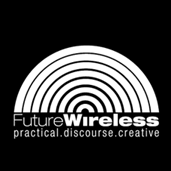
.programme
.background
.contributors
.visions
.links / resources
 |
.programme |
| .visions / tapio mäkelä | |
|
Tapio Mäkelä (bio)
|
Wireless creative fringe and popular mobile cultures In Norway, it is believed that the fastest growing mobile market is the countries’ sheep population, who in the future will carry a customized gsm device transmitting location and other contextual information. Should the creative wireless practitioners follow the pack and start planning for new projects in the rural locative context? Creative wireless practitioners ranging from engineers to designers and artists have to a large degree followed each emerging technical niche or economical market. These thresholds of speculation are also very fruitful for researchers and theorists alike, not to mention national decision makers in the public sector, who rush to shift emphasis of funding policies. The other side of the pun is that as a given national market has become saturated with mobile phone devices, rather than investing into more advanced user/consumer driven concepts and services, the emphasis has shifted to invest abroad as well as to the so called M2M (machine to machine) wireless communication market. After the .com crash so much discourse, research, and design experiments has been done along the lines of “user-centered”. Except for changes in the features of mobile phones, fairly traditional concepts such as Skype, widely popular wireless practices are few. The reason why I emphasize popular practices is that also the artistic and expressive, socially or politically oriented wireless projects should have a conscious relation to the field outside of their own, and particularly to non-expert users. Currently, whether we talk about Uncle Roy or Urban Tapestries here in the UK, or Nine in Netherlands, “Situations” in Finland, or the MILK project in Latvia – they are accessed by a tiny expert fragment of mobile users within a creative fringe, and usually within an event context. Events have become a temporary public interface for the creative wireless sector. Bringing the projects to street level, without festival or exhibition contexts would also allow a more critical user-audience feedback. One of the main challenges is to bridge the gap between the creative wireless fringe and different, not necessarily general but more so specific sub-cultural user groups or “user layers” (by layers I mean that there is no “group” identity, and affiliations can be translocal and transcultural). The industry is accustomed to design horizontally for traditional markets while the creative wireless fringe is often satisfied to become itself the subculture for which to design. An interesting niche lies in various combinations of subcultures and technologically experimental fringe. Whether the sub-culture is connected to lifestyle, political activism or other local movements, the point is that an interconnection between a meaningful lived experience and wireless technology application could potentially be made. In other words, wireless applications and projects might then be designed, not because the technology is there to be used, but because it provides communicational, expressive or other new features for a particular context. WiFi, GPS, mobile devices as such are far from rich as expressive media, and they certainly are not a rich context as a site of meaning. If in the early nineties “jacking in” to cyberspace became a silly mantra, then being wireless is equally devoid of meaning for a real person. Unless one subscribes to the inter-planetary channel of Nikolai Tesla, Marvin Minsky, Roy Ascott and the like for whom there is always a metaphysical quality to technological innovations. In early stages of each technology, like the popular Internet for example or VR, it takes years before the fascination of the mere existence of that technology wears out. The connected world and the immersive user with all cyber blah blah took off only 10 years ago as a popular discourse. In fact, early web and VR experimentation were at the root of the popular phenomenon of the Internet – and films like Matrix later on. So in this sense we may be looking at wireless project based experimentations as a similar stage as early 1990s web and VR activity was like. There is much more soberness in relation to techno futurism in comparison with the VR hype, yet, I don’t see as much analytical or critical reflection but more so a “let’s do it” attitude. The other side of the popular wireless culture in relation to not yet popular and never want to be popular is that many practitioners were very active in the earlier stages of Internet but have “moved on” to become wireless artists and designers. Are we talking about simply seeking success, going where the money flows, technological fetishism, or a kind of techno avant gardism? If it is the latter, where the claims are that it is critical to be influencing the latest communication technology developments, then the word critical needs to be redefined. From the perspective of art or media art history, working with new technologies to create alternative uses and experiences has been a central focus, hence the art in the wireless can be seen as a continuity of that tangent. However, what is the nature of the alternative? Personally I find it interesting, and necessary, to oscillate between critical, analytical position and that of the maker of projects. It is possible to be enthusiastic about contextualized use of new technologies while being critical of the technological progress ideology that still so thoroughly surrounds even critical techno-cultures. Copyright Tapio Mäkelä 2005 |